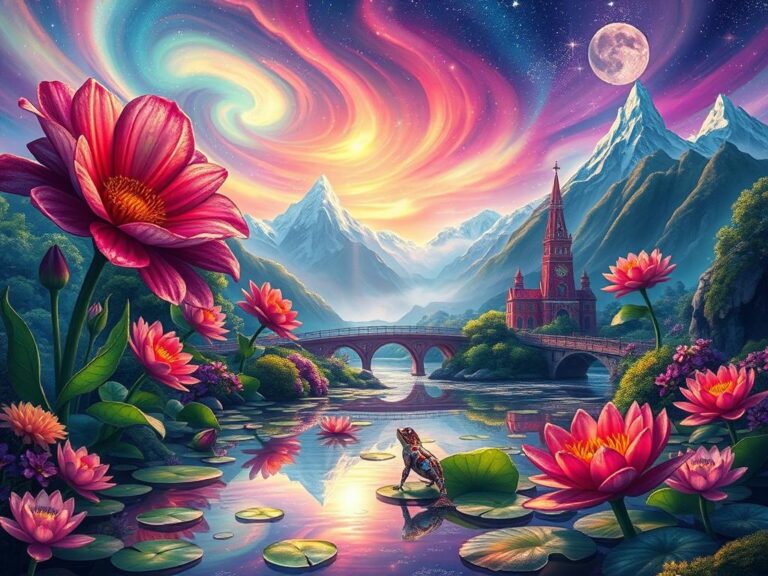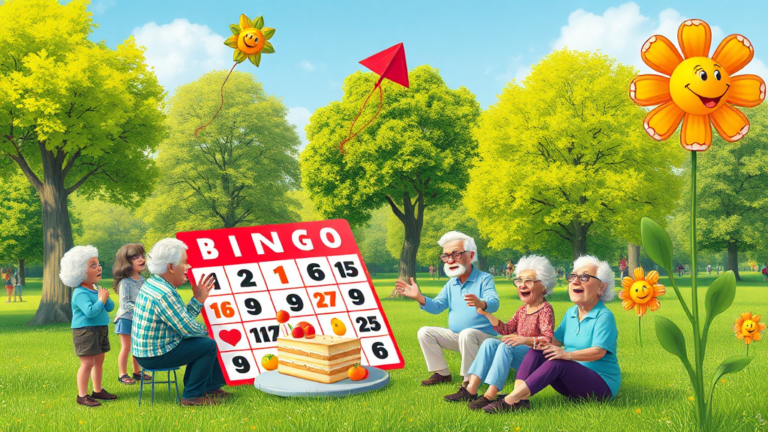The History of Humor: How Comedy Evolved Over Time
The History of Humor: How Comedy Evolved Over Time
The history of humor is not just about laughter; it is a reflection of societal values, culture, and even politics throughout time.
From the playful jests of ancient civilizations to the viral memes of today’s digital landscape, humor has continuously evolved, showcasing a myriad of styles, forms, and purposes.
Understanding the journey of comedy provides fascinating insights into how we communicate, critique, and bond over shared experiences.
In this article, we will delve into the rich history of humor, exploring significant milestones that shaped comedy through the ages—from its origins in ancient Greece to the explosion of internet memes in the 21st century.
Ancient Laughter: The Birth of Comedy in Greece (5th Century BC)
Comedy as a genre has its roots deep in ancient Greece.
Playwrights like Aristophanes crafted humorous performances that not only entertained but also critiqued societal norms, politics, and prominent figures of the time.
Aristophanes’s plays were often staged during religious festivals, indicative of comedy’s significant role in cultural expression.
The structure established by these early playwrights laid the groundwork for comedic storytelling, influencing both theater and literature for centuries to come.
For instance, in “Lysistrata,” Aristophanes humorously tackled issues of war and gender, using wit as a tool for social commentary.
The laughter elicited by these performances was not just for entertainment; it served as a means for dialogue about pressing societal issues.
These comedic playwrights established a tradition of humor that remains influential to this day.
Roman Farce: Expanding the Definition of Humor (3rd Century BC – 3rd Century AD)
The Romans adopted Greek comedic elements and infused their culture with unique characteristics, leading to a new phase in the evolution of comedy.
The “fabula atellana” emerged, a form of early Roman theater that included stock characters and exaggerated scenarios reminiscent of modern slapstick.
Comedic characters, such as the cunning slave and the braggart soldier, became staples of Roman humor, paving the way for the development of farce that emphasized physical humor, pratfalls, and blunders.
This shift highlighted how societal values and tastes evolved across cultures.
Roman theater also emphasized improvisation, in which actors interacted with the audience, heightening the comedic experience.
Through this active engagement, Roman humor became a communal event, meant to not only entertain but also reflect the values and contradictions present in their society.
The Middle Ages: The Role of Jesters and Court Fools (5th – 15th Century)
The medieval era brought about the rise of jesters and court fools, who served as informal comedians in royal courts.
These entertainers were more than simple jesters; they used wit, humor, and satire to critique prevailing norms and court politics while entertaining nobility.
A famous example would be the character of the fool in Shakespearean plays, who often imparted wisdom through foolishness.
Dressed in motley and often equipped with a cap and bells, court jesters delighted audiences with their clever quips and anecdotes.
Jesters highlighted the evolution of comedy from theater to informal performance, blending elements of physical comedy and wordplay that would later shape various comedic genres.
A jester’s unique position allowed for an unfiltered critique of authority, making humor an important social tool even in serious settings.
Renaissance Wit: Wordplay and Satire (14th – 17th Century)
The Renaissance was a time of revitalization in the arts, characterized by the interplay of culture, philosophy, and humor.
Playwrights like Shakespeare and Molière intertwined humor with intelligent wordplay and sharp social commentary.
Shakespeare’s use of puns is legendary, seen most evidently in plays like “Much Ado About Nothing” and “Twelfth Night,” where humor exposes character flaws and societal misunderstandings.
Molière’s works, such as “Tartuffe,” criticized hypocrisy in a manner that combines humor with a powerful moral statement.
These playwrights expanded the possibilities of comedic dialogue, paving the way for future generations of comedic writers.
The Age of Enlightenment: Humor as Social Commentary (17th – 18th Century)
During the Enlightenment, humor evolved even further as writers began using satire to critique societal issues.
Notable figures such as Jonathan Swift and Voltaire employed humor as a powerful vehicle for social commentary, blending it with philosophical discourse.
Swift’s “A Modest Proposal” showcases humor’s potential to shock readers into contemplating serious issues like poverty and inequality.
This era emphasized that comedy had moved beyond mere entertainment, becoming an instrument for invoking change and challenging the status quo.
The Vaudeville Era: Visual Humor and Variety Acts (19th Century)
The 19th century saw the emergence of vaudeville, a theatrical variety show that included music, dance, and comedy.
Comedians such as Charlie Chaplin rose to prominence, captivating audiences with physical humor that transcended language barriers.
Chaplin’s iconic character “The Tramp” symbolized the struggles of the everyman, utilizing slapstick with a narrative to expose societal issues, including class disparities.
This visual aspect of comedy paved the way for the development of a variety of comedic traditions that appealed to diverse audiences.
The Golden Age of Hollywood: Comedy on Film (1920s – 1960s)
The silent film era introduced brilliant comedic talents like Buster Keaton and Harold Lloyd, whose physical comedy and timing became legendary.
The advent of sound in films marked a new direction, bringing comedic legends like the Marx Brothers and screwball comedies into the limelight.
These films reflected the societal changes occurring at the time, using humor to address themes of love, conflict, and societal norms.
From witty dialogue to zany plots, Hollywood’s comedic film era established a template for modern comedy.
Stand-Up Comedy: The Rise of the Solo Performer (20th Century)
The mid-20th century heralded the emergence of stand-up comedy as a distinct art form.
Pioneering comedians like Lenny Bruce and George Carlin pushed boundaries, addressing taboo subjects and employing personal narrative to connect with audiences.
Their unique styles paved the way for a generation of comedians to explore diverse themes, from politics to identity, all while utilizing humor as a form of cultural critique.
The rise of stand-up comedy created a platform for individual voices, reinforcing the idea that humor could encapsulate personal and societal truths.
Television and the Sitcom: The Birth of Relatable Comedy (1950s – 2000s)
The growth of television in the mid-20th century led to the emergence of the sitcom, a groundbreaking format that popularized humor through relatable situations.
Iconic shows like “I Love Lucy” and “Friends” deftly wove humor with everyday life.
These sitcoms emphasized character-driven comedy rooted in the struggles and quirks of normal life, allowing audiences to connect through shared experiences.
The structure of the sitcom delivers laughs while maintaining a consistent arc, a model that remains relevant in contemporary television.
The Internet Era: Memes and the Democratization of Humor (2000s – Present)
The rise of the internet transformed how humor is created and consumed.
Memes, gifs, and viral videos became the hallmark of modern comedic expression.
Platforms like social media democratized humor, allowing diverse voices to emerge and share comedic content on a global scale.
The collaborative nature of the internet has led to an explosion of jokes, satire, and perceptive humor that resonates across various cultural contexts.
This new age of humor showcases creativity unfettered by traditional constraints, further proving that comedy is as dynamic as the world around us.
Conclusion
The journey of comedy throughout history highlights not just the evolution of entertainment, but the intricate tapestry of human interaction, cultural expression, and social dialogue.
From ancient Greece’s first comedic playwrights to today’s fast-paced digital humor, every milestone reflects shifts in societal values and cultural expectations.
Comedic evolution showcases its necessity in understanding ourselves and one another, proving that humor is a cornerstone of human connection.
FAQ
What are the main milestones in the history of comedy?
The main milestones in the history of comedy include:
1. Ancient Greek comedies by playwrights like Aristophanes.
2. Roman farces that expanded the use of slapstick and physical humor.
3. The rise of jesters and court fools during the Middle Ages.
4. Renaissance wit displayed by playwrights such as Shakespeare and Molière.
5. Enlightenment satire by figures like Jonathan Swift and Voltaire.
6. The vaudeville era, showcasing comedians like Charlie Chaplin.
7. The Golden Age of Hollywood with iconic film comedies.
8. The rise of stand-up comedy as a unique genre.
9. The sitcom era stemming from television’s growth.
10. The current internet age that embraces memes and shared humor.
How has humor served as a critique of society?
Throughout history, humor has often been employed as a critique of society.
Comedians and writers have utilized satire and wit to challenge social norms, question authority, and tackle taboo subjects.
For example, Aristophanes’s plays question societal values while Jonathan Swift’s satire confronts issues of poverty and inequality.
This ability to provide commentary through humor allows audiences to reflect on and discuss critical issues in a way that is engaging yet thought-provoking.
Can humor bring societal change?
Humor can indeed play a pivotal role in bringing about societal change.
By exposing absurdities and inconsistencies in societal norms, comedic expression fosters conversations about sensitive subjects.
Many times, laughter disarms audiences, making them more receptive to new ideas and perspectives.
When delivered effectively, humor can transform discourse, encouraging individuals and communities to confront challenges and consider alternative views.
How has the internet changed the way we experience humor?
The internet has revolutionized the way we experience and share humor.
With the rise of social media platforms, people now create, share, and collaborate on comedic content in real-time.
Memes and viral videos have become the new avenues for comedic expression, appealing to a broad audience across different cultures and backgrounds.
This accessibility has diversified comedic voices, allowing for a rich tapestry of humor that reflects a variety of lifestyles and cultures.
If you have thoughts, experiences, or questions about the evolution of humor, feel free to share them in the comments section!
Explore More on the Evolution of Humor
- The History of Humor: How Comedy Evolved Over Time
- 100 Historical Figures with Hilarious Quotes That Will Make You Laugh
- Joke Collections from Around the World: An Exploration of Global Humor
- The Science of Laughter: Why We Find Things Funny
- Create Your Own Joke: Submit Your Punchline
- What Do You Call a ____? The Best What Do You Call Jokes
- Doctor-Patient Humor: 100 Medical Jokes to Make You Chuckle
- Lawyer Humor: 100 Legal Jokes That Are Actually Funny
- Funny Riddles That Will Challenge Your Brain and Make You Laugh
- Funny Movie Quotes: 100 Hilarious Lines from Films That Will Keep You Laughing
- Office Jokes: 100 Funny Quips for the Workplace
- Holiday Humor
Delve deeper into the amusing world of humor and discover how it has evolved through various expressions and cultures! Each link offers a unique perspective, from the history of comedy to global jokes, scientific insights into laughter, and much more.
References for Further Reading on the Evolutionary Origins of Laughter
- The evolutionary origins of laughter are rooted more in survival than enjoyment
- Springer: Entry on the evolutionary significance of humor
- Reddit Discussion on the evolutionary reason for humor
- SAGE Journals: The role of humor in human evolution
- The University of Chicago Press: An exploration of laughter in the context of evolution







